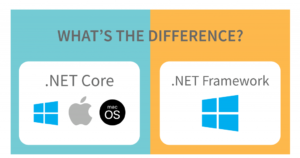Introduction:
Programming paradigms can be divided into two main categories: imperative and declarative. Imperative programming focuses on how to achieve a result, while declarative programming focuses on what result to achieve. Both approaches have their pros and cons, and choosing the right one for the task at hand can greatly affect the maintainability, readability, and efficiency of your code. In this blog post, we will explore the differences between these two paradigms with examples.
Imperative Programming:
Imperative programming is a programming paradigm that describes the steps required to achieve a result. This approach is used in procedural programming, where code is organized into procedures or functions that perform specific tasks. Imperative code focuses on the process of achieving a result, rather than the result itself. Imperative code is typically characterized by the use of statements, loops, and variables to control the flow of execution.
Example:
using python
# Imperative code to calculate the sum of the first n natural numbers
def sum_naturals(n):
total = 0
for i in range(1, n+1):
total += i
return total
In the above example, we are using a for loop to iterate over the numbers from 1 to n and add them up to calculate the sum of the first n natural numbers.
Declarative Programming:
Declarative programming is a programming paradigm that describes what result to achieve, rather than how to achieve it. This approach is used in functional programming, where functions are used to transform data from one form to another. Declarative code focuses on the end result, rather than the steps needed to achieve that result. Declarative code is typically characterized by the use of expressions and functions to represent data and computations.
Example:
using python
# Declarative code to calculate the sum of the first n natural numbers
def sum_naturals(n):
return sum(range(1, n+1))
In the above example, we are using the built-in sum function to calculate the sum of the first n natural numbers. This is a declarative approach because we are describing what result to achieve (the sum of the first n natural numbers), rather than how to achieve it (using a for loop to add up the numbers).
Differences:
The main differences between imperative and declarative programming are:
- Control flow: Imperative programming uses statements and loops to control the flow of execution, while declarative programming uses expressions and functions to represent data and computations.
- Mutable state: Imperative programming often uses a mutable state to keep track of the program’s state, while declarative programming avoids mutable states and instead uses immutable data structures.
- Side effects: Imperative programming may have side effects, which are changes to the program’s state that are not reflected in the function’s return value. Declarative programming avoids side effects and instead focuses on producing a predictable and consistent output.
Conclusion:
Both imperative and declarative programming have their pros and cons, and choosing the right approach for the task at hand can greatly affect the maintainability, readability, and efficiency of your code. Imperative programming can be more efficient for tasks that require low-level control over the computer hardware or tasks that involve mutable states. Declarative programming can be more concise, easier to read, and less error-prone for tasks that involve data transformations or complex computations. By understanding the differences between these two paradigms, you can choose the right approach for your next programming project.



